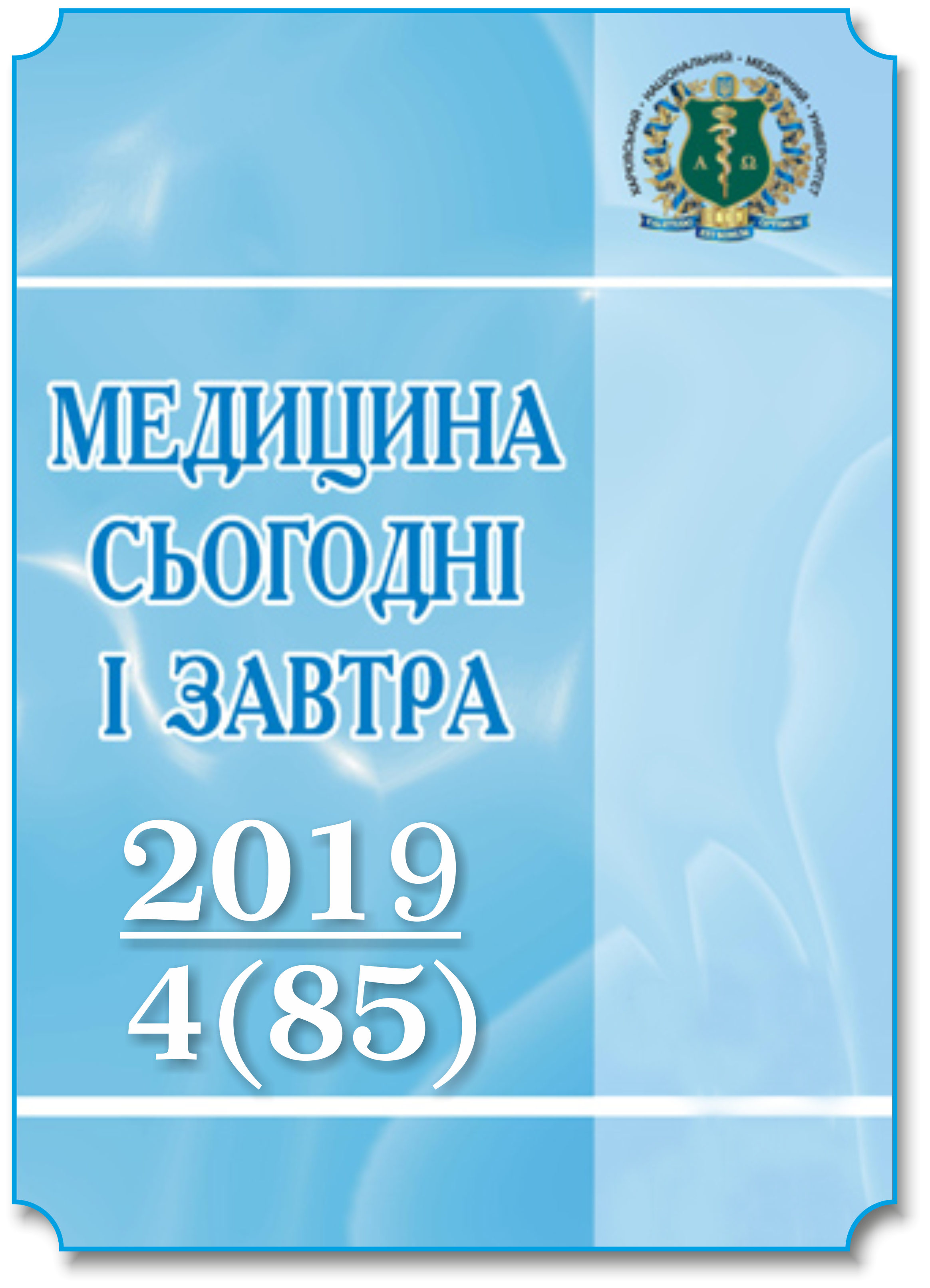Abstract
As a result of infrared spectroscopy of kidney stones obtained from 59 patients with urolithiasis, a wide range of chemical compounds were identified in the samples, in which whevellite (calcium oxalate monohydrate), hydroxylapatite and uric acid were presented in the largest quantities. Monophasic stones were found in 8.4 % of patients. The two-phase, three-phase and four-phase composition of the samples was determined in 37.2 %, 42.3 % and 11.8 % of patients respectively. Carrying out infrared spectroscopy of kidney stones obtained as a result of self-passage or due to the use of surgical methods will contribute to the correct choice of an individual program for metaphylaxis of urolithiasis in different patients.
References
Ahmad F., Nada M.O., Farid A.B., Haleem M.A., Razack S.M.A. (2015). Epidemiology of urolithiasis with emphasis on ultrasound detection: a retrospective analysis of 5371 cases in Saudi Arabia. Saudi J. Kidney Dis. Transpl., vol. 26 (2), pp. 386–391.
Sorokin I., Mamoulakis C., Miyazawa K., Rodgers A., Talati J., Lotan Y. (2017). Epidemiology of stone disease across the world. World J. Urol., vol. 35, pp. 1301–1320.
Ma Rui-hong, Luo Xiao-bing, Li Qin, Zhong Hai-qiang (2017). The systematic classification of urinary stones combine-using FTIR and SEM-EDAX. International Journal of Surgery, vol. 41, pp. 150–161.
Daudon M., Dessombz A., Frochot V., Letavernier E., Haymann J.-Ph., Jungers P., Bazin D. (2016). Comprehensive morpho-constitutional analysis of urinary stones improves etiological diagnosis and therapeutic strategy of nephrolithiasis. C. R. Chimie, vol. 19, issue 11–12, pp. 1470–1491.
Heise H.M. (1997). Medical applications of infrared spectroscopy. Progress in fourier transform spectroscopy. Mink J., Keresztury G., Kellner R. (Ed.). Mikrochimica Acta Supplement (Vol. 14). Vienna: Springer.
Türk C., Neisius A., Petrik A., Seitz C., Skolarikos A., Thomas K. (2018). Guidelines on urolithiasis. European Association of Urology. Retrieved from http://https://uroweb.org/wp-content/uploads/EAU-Guidelines-on-Urolithiasis-2018.
Popescu (Pintilie) G.S., Ionescu I.,Grecu Rodica, Preda Anişoara (2010). The use of infrared spectroscopy in the investigation of urolithiasis. Revista Română de Medicină de Laborator, vol. 18, № 4/4, pp. 67–77.
Blanco Fr., Ortiz-Alías P., López-Mesas M., Valiente M. (2015). High precision mapping of kidney stones using μ-IR spectroscopy to determine urinary lithogenesis. J. Biophotonics, vol. 8, № 6, pp 457–465, DOI 10.1002/jbio.201300201.
Sekkoum Kh., Cheriti A., Taleb S., Belboukhari N. (2016). FTIR spectroscopic study of human urinary stones from El Bayadh district (Algeria). Arabian Journal of Chemistry, vol. 9, pp. 330–334.
Skolarikos A., Straub M., Knoll T., Sarica K., Seitz Ch., Petřík Al., Türk Chr. (2015). Metabolic evaluation and recurrence prevention for urinary stone patients: EAU Guidelines. European Urology, vol. 67, issue 4, pp. 750–763.
Ray E.R., Rumsby G., Smith R.D. (2016). Biochemical composition of urolithiasis from stone dust – a matched-pair analysis. BJU Int., vol. 118 (4), pp. 618–624.
Mandel N.S., Mandel I.C., Kolbach-Mandel A.M. (2017). Accurate stone analysis: the impact on disease diagnosis and treatment. Urolithiasis, vol. 45 (1), pp. 3–9, DOI 10.1007/s00240-016-0943-0.
Kanchana G., Sundaramoorthi P., Jeyanthi G.P. (2009). Bio-chemical analysis and FTIR-spectral studies of artificially removed renal stone mineral constituents. Journal of Minerals & Materials Characterization & Engineering, vol. 8, № 2, pp. 161–170.
Pak C.Y., Poindexter J.R., Adams-Huet B., Pearle M.S. (2003). Predictive value of kidney stone composition in the detection of metabolic abnormalities. Am. J. Med., vol. 115 (1), pp. 26–32.

